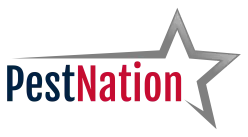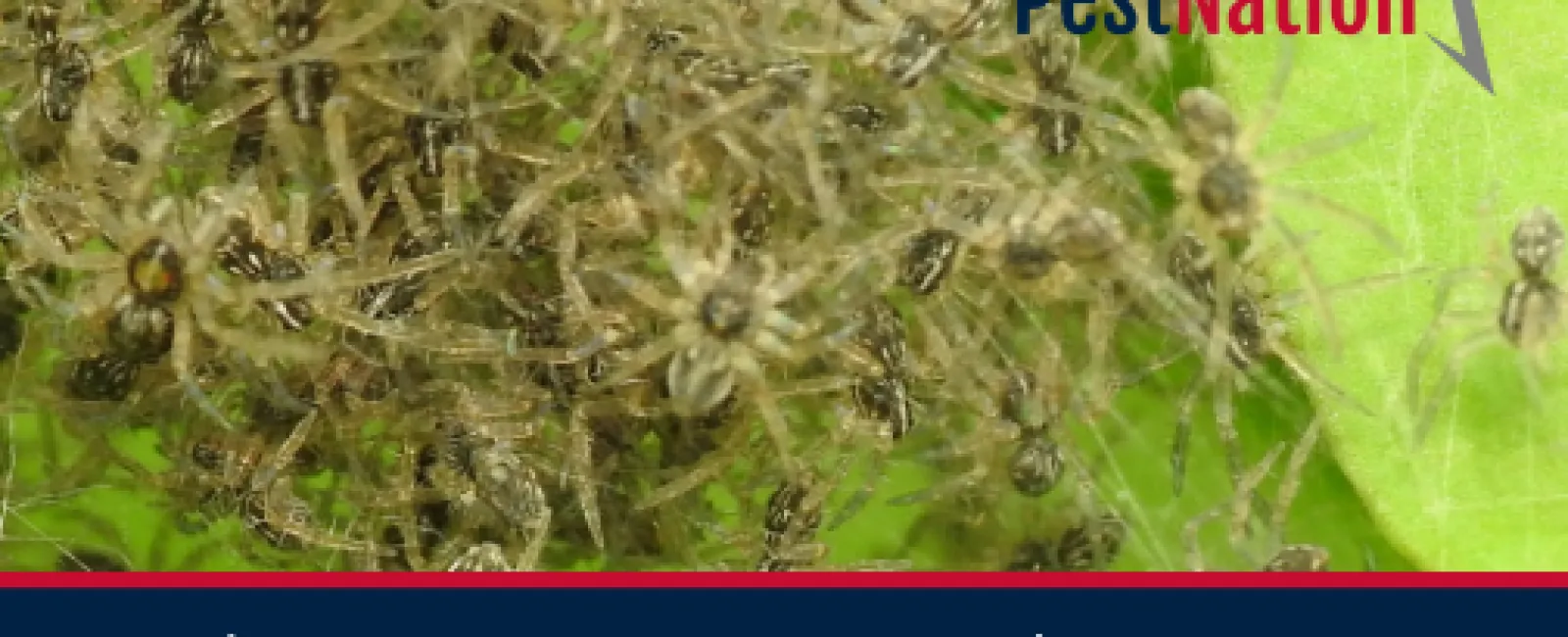How Warmer Weather Increases Spider Activity and When to Call a Professional
As temperatures rise and flowers bloom, you may start to notice an unwelcome seasonal trend: more spiders in and around your home. While spider sightings may be relatively rare during the colder months, May marks the beginning of a noticeable spike in spider activity for homeowners in Atlanta, Charlotte, and Charleston. From basement corners to bathroom walls and garden sheds, spiders seem to show up everywhere—prompting concern, curiosity, and sometimes panic.
This increase in sightings isn't a coincidence. Spiders are cold-blooded arthropods whose behavior and movement are heavily influenced by external temperatures. As spring turns into early summer, these pests become more active in search of food, mates, and shelter. Some species emerge from overwintering hideouts, while others hatch from egg sacs that were laid in the fall. Either way, May sets the stage for a seasonal population boom.
While most spiders are harmless and even beneficial in terms of controlling other insect populations, a few species pose health risks or quickly become a nuisance when they multiply unchecked. Knowing when to tolerate them, when to manage them, and when to call a professional is essential for maintaining a safe and pest-free home. At PestNation, we help homeowners throughout Atlanta, Charlotte, and Charleston understand, prevent, and treat spider infestations with science-based strategies and proven interior and exterior pest treatments.
Why Spider Activity Increases in May
Seasonal Biology and Breeding Patterns
Spiders follow predictable life cycles tied closely to the seasons. During the cold months, most spider species in the Southeast enter a dormant or slowed-down state called diapause. This period allows them to conserve energy and avoid freezing temperatures. By late spring—especially in warmer climates like Atlanta, Charlotte, and Charleston—temperatures rise enough to trigger activity. Spiders become more mobile and begin the search for food, water, and mating opportunities.
May is also the month when spiderlings begin to hatch. Many spider species lay egg sacs in the fall, tucking them away in protected corners of attics, garages, and crawlspaces. When temperatures warm up, those eggs hatch into hundreds of tiny spiders, some of which disperse through a process known as "ballooning," while others remain in the area and begin hunting. These juvenile spiders contribute significantly to the surge in sightings.
Increased Insect Activity = More Food
Spiders are carnivorous predators, feeding primarily on insects. As warmer weather encourages insect activity—flies, mosquitoes, moths, and ants—the spiders follow. Outdoor lights, uncovered trash bins, and backyard gardens attract bugs, and where bugs go, spiders are sure to follow. PestNation pest inspections often reveal that spider infestations are linked to unchecked insect populations or inadequate exclusion measures that allow both prey and predators inside.
Because spiders follow their food source, a sudden increase in their presence can indicate a larger problem: other insects thriving in your home or yard. Effective spider control often begins with comprehensive pest management strategies targeting the whole ecosystem, not just the spiders themselves.
Where Spiders Hide in Your Home
Indoor Hotspots for Spider Activity
Spiders are opportunistic and seek dark, undisturbed places to rest, nest, and hunt. Common hiding spots include:
-
Basement corners
-
Garage shelving
-
Window sills
-
Behind furniture
-
Under sinks
-
Inside crawlspaces and attics
Homes in Charlotte, Atlanta, and Charleston are especially prone to spider activity in areas where moisture levels are high—such as basements, bathrooms, or poorly ventilated attics. These environments also attract rodents and insects, further encouraging spider presence.
One of the most overlooked contributors to spider infestations is the presence of rodents. During PestNation pest inspections, technicians frequently discover overlapping pest activity, as mice and rats provide both competition and nesting materials for spiders. Comprehensive control may require rodent exclusion strategies to prevent ongoing infestations from multiple pests.
Outdoor Nesting and Entry Points
Spiders often begin outside and find their way indoors through small cracks and gaps in windows, doors, siding, or utility lines. Outdoor areas like:
-
Wood piles
-
Garden sheds
-
Leaf piles
-
Eaves and gutters
-
Porch furniture
...are common nesting sites. From these perches, spiders make their way indoors—especially during stormy weather or after food sources diminish.
That's why Charleston, Atlanta, and Charlotte interior and exterior pest treatments must address the perimeter of the home as well as the inside. Without sealing entry points and treating high-risk exterior areas, spider problems will persist no matter how often you clean or spray indoors.
Common Spiders in the Southeast
Harmless but Frequent Visitors
The most commonly encountered spiders in the Southeastern U.S. include:
-
Common House Spider (Parasteatoda tepidariorum)
-
Cellar Spider (aka Daddy Long Legs)
-
Orb-Weaver Spiders
-
Jumping Spiders
These species are generally harmless to humans and help reduce populations of flies, moths, and mosquitoes. Still, their presence in large numbers can be unsightly and alarming, especially when webs accumulate indoors or around entryways.
Dangerous Species to Watch For
While most spiders are not medically significant, two species in the region warrant particular caution:
-
Brown Recluse Spider (Loxosceles reclusa) - Often found in attics, basements, and closets; their bites can cause necrotic wounds and require medical attention.
-
Black Widow Spider (Latrodectus mactans) - Identified by its shiny black body and red hourglass marking; its venom can trigger serious neurological symptoms.
Though these species are relatively rare, they do exist in parts of Atlanta, Charlotte, and Charleston, making accurate identification during PestNation pest inspections especially important.
DIY Prevention Tips That Actually Work
Simple Steps for Reducing Spider Activity
Before spider populations grow out of control, there are several steps homeowners can take:
-
Reduce Clutter: Spiders love undisturbed environments. Regularly clean basements, attics, and closets.
-
Vacuum Frequently: Remove webs, egg sacs, and hiding spiders.
-
Eliminate Food Sources: Address insect problems through cleaning, trash control, and quarterly services.
-
Seal Entry Points: Use caulk or weather stripping to close gaps in doors, windows, and siding.
-
Maintain Yard Hygiene: Trim shrubs, move wood piles, and clean out gutters.
Incorporating these habits into your regular home maintenance routine can significantly reduce spider encounters. But for consistent, long-term control, professional services remain the gold standard.
When to Call a Professional Pest Control Company
Warning Signs of an Infestation
While a few isolated spiders are to be expected, several indicators suggest it's time to call in the professionals:
-
Frequent sightings of multiple spiders in a short period
-
Presence of egg sacs or large webs inside the home
-
Unusual or aggressive spider behavior
-
Bites from unidentified spiders
-
Increased sightings of other pests like ants, flies, or rodents
At PestNation, we offer detailed inspections and strategic treatments to address both spiders and their food sources. Our quarterly services include perimeter sprays, crack and crevice treatments, and monitoring strategies tailored to seasonal behavior patterns.
Why Professional Treatment Works
Professional pest control technicians have access to commercial-grade products and techniques unavailable to the general public. This includes low-toxicity sprays, insect growth regulators, and advanced exclusion tools. More importantly, professionals like the team at PestNation understand the biology, behavior, and seasonal patterns of local spider populations.
For residents in Charlotte, Atlanta, and Charleston, PestNation offers region-specific treatments that take into account climate, home architecture, and other environmental factors. This personalized approach ensures more consistent results and fewer surprises when the weather warms up each year.
Seeing more spiders in May is not just a coincidence—it's a natural result of warmer temperatures, increased insect activity, and seasonal breeding cycles. For homeowners in Charlotte, Atlanta, and Charleston, spring and early summer mark a time of increased vigilance when it comes to keeping spiders and other pests at bay.
Understanding the reasons behind this seasonal surge can help reduce panic and improve prevention efforts. From simple DIY strategies like reducing clutter and sealing entry points, to more advanced solutions like PestNation pest inspections and rodent exclusion, there are many ways to keep your home free of spiders and their web-covered surprises.
Ultimately, the best way to protect your home is with a comprehensive pest management plan. PestNation offers quarterly services and interior and exterior pest treatments tailored to your region, your home, and the specific pest pressures you face. With professional support, you can enjoy a spider-free spring and peace of mind all year long.
Don't let spider season catch you off guard. Contact PestNation today to schedule an inspection or learn more about how our services in Charleston, Atlanta, and Charlotte can keep your home protected—inside and out.

